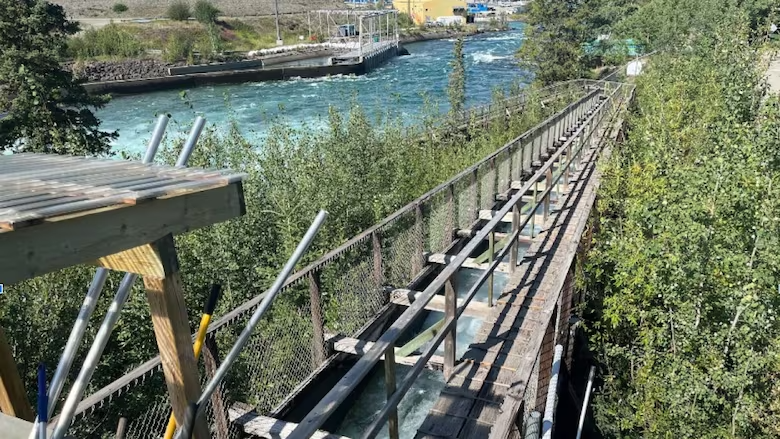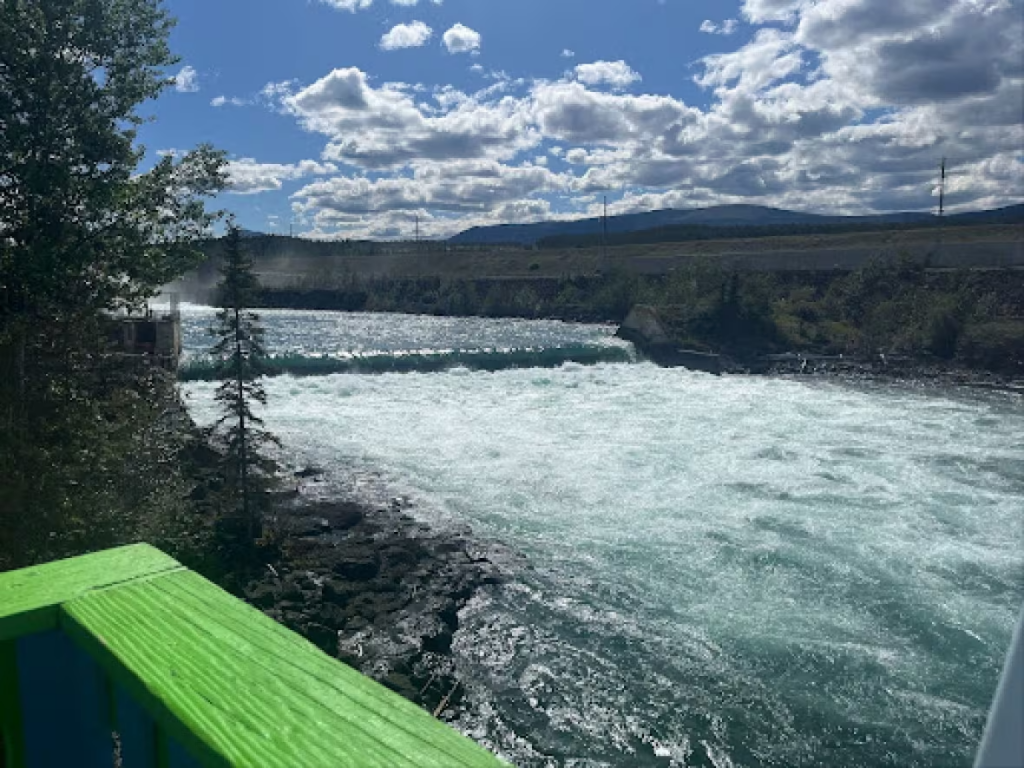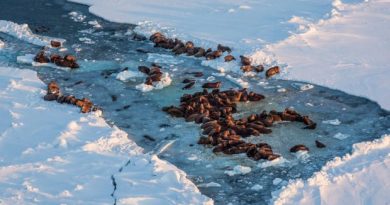Here’s how Yukon Energy hopes to reduce fish deaths at the Whitehorse dam

By Isabella Calissi
Company’s new licensing agreement for the dam requires improvements to fish safety
Yukon Energy says it’s taking action to reduce harm to fish populations at the Whitehorse dam.
The utility and local First Nations have commissioned a study by a firm specializing in fish passage to look at the available technologies for getting fish past barriers like dams, according to Kirsten Hogan, a representative of Yukon Energy’s technical working group.
“They worked with us to identify everything that was in the realm of possibility,” she said.
“We screened those down to some options that would actually work for this facility and the terrain and the location that we’re in for fish moving upstream past the dam,” she said.
Yukon Energy is required to improve its performance on fish safety under the terms of a new relicensing agreement signed with the Yukon Water Board on July 30, which allows the utility to continue operating the dam for another 20 years.
A report by the environmental consulting firm Ecofish earlier found that thousands of fish could be harmed or killed after being sucked into the dam’s intakes and its turbines.
Helping fish travel upstream
The utility is considering a couple of actions the reduce the dangers, Hogan said, including possibly replacing the dam’s turbines with ones that are considered more fish-friendly.
It’s already working on improvements to the fish ladder for fish traveling upstream, she said.
Those include potentially increasing the size of the ladder’s channel to allow more fish in, and trying to increase the flow of water at the bottom of the ladder to attract the fish.
That would allow them to use the ladder quickly without wasting their time and energy at the bottom looking for a way up.
“There are some other technologies that have not been proven at this location that we’re considering, including a fish lift, which would be a hydraulic elevator, basically to get fish past the dam,” Hogan said.
The company is also considering intake screens, which filter out debris passing through the dam so that fish encounter fewer obstacles on their journeys, and a bypass pipe which would provide a safe pathway for fish to get through the turbines.

In addition, Hogan said, it is looking at adding a movable weir to control the strength of the current and make it easier for fish to swim up the ladder
And it’s considering a physical barrier that would sit along the surface of the water, and direct fish toward the ladder rather than the turbines.
While Yukon Energy explores these options over the next couple of months, company officials are working with the Kwanlin Dün First Nation and the Ta’an Kwach’an Council.
“This relicensing marks an important milestone in Yukon,” Chief Ruth Massie of the Ta’an Kwäch’än Council said in a written statement.
“For the first time, First Nations affected by the dam have been able to have real input into the review and relicensing process.”
Massie added that improving upstream passage for fish “is critical to restoring the salmon populations.”
“We have requested firm timelines be implemented on these and other mitigation matters as we work together on next steps,” she said.
Related stories from around the North:
Canada: Inuit-owned ‘state of the art’ fishing vessel christened in Iqaluit, CBC News
Greenland: New Greenland-Nunavut Fisheries Committee won’t set harvest limits, The Canadian Press
Norway: Moscow threatens Oslo over Barents fisheries, The Independent Barents Observer
Russia: Brussels imposes sanctions on Murmansk fishery industry, The Independent Barents Observer



